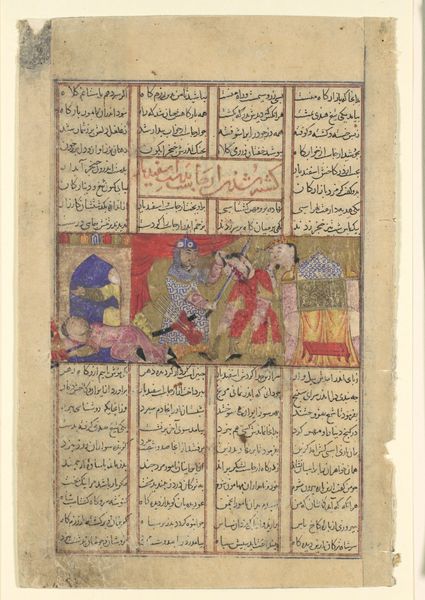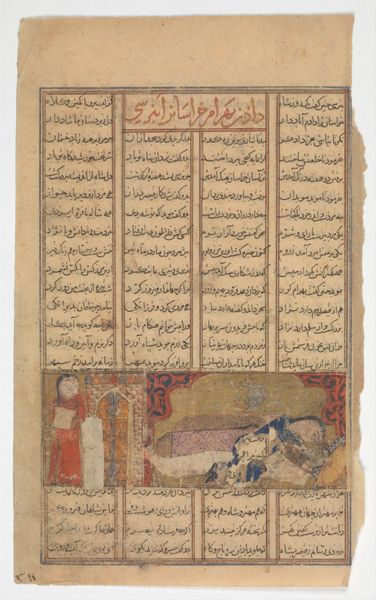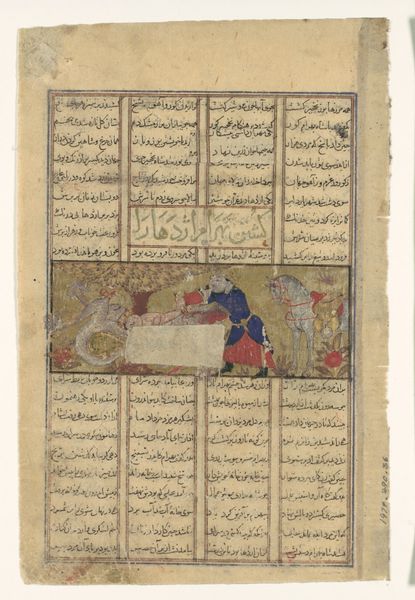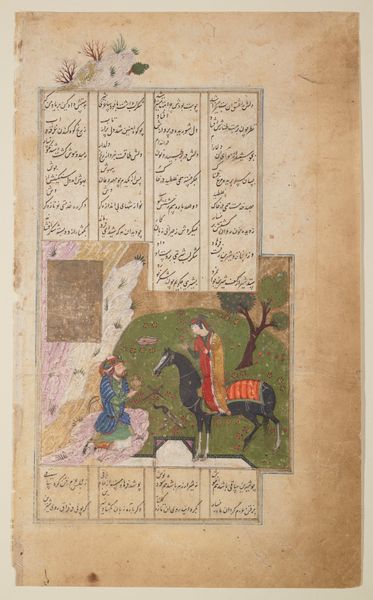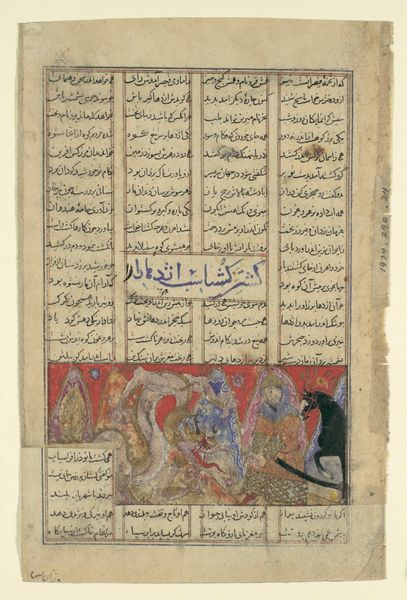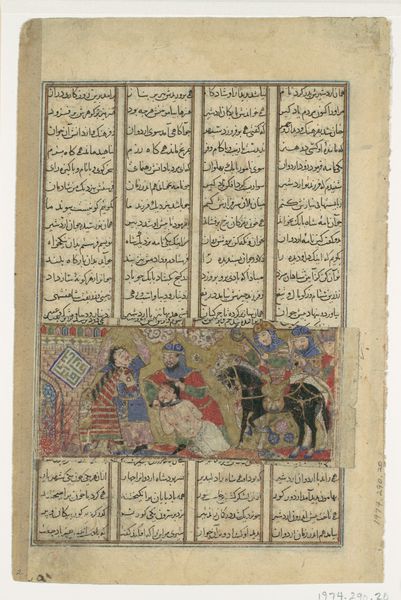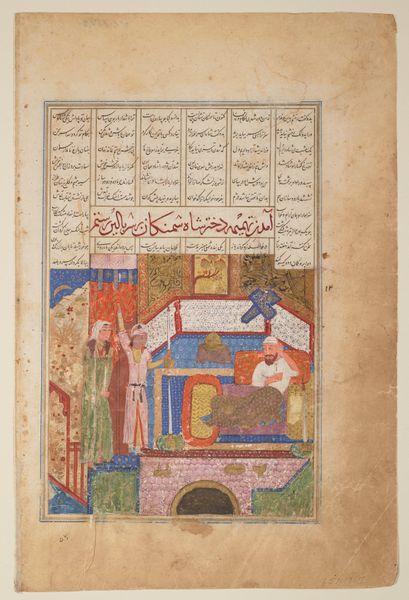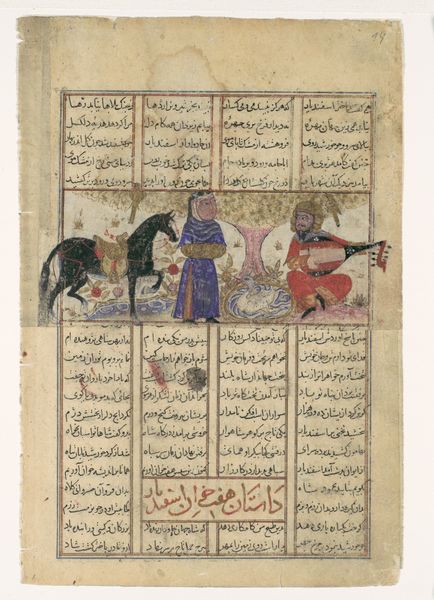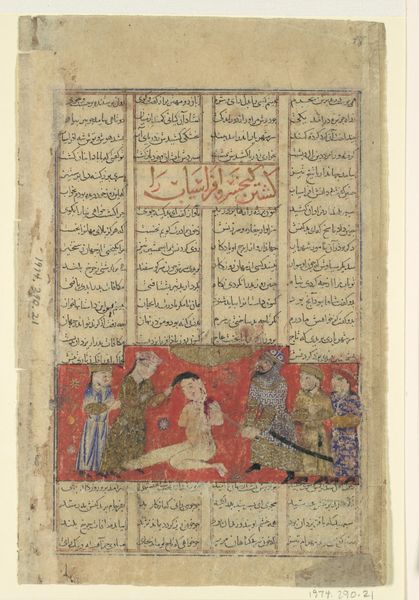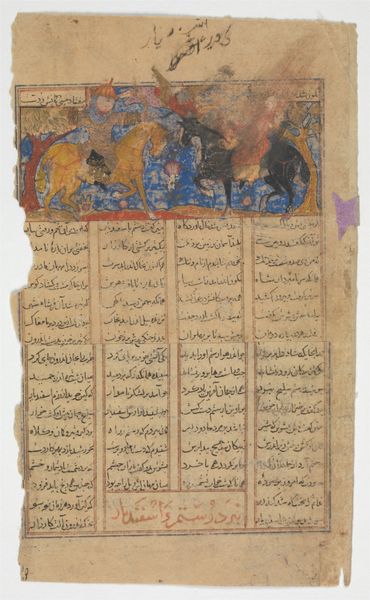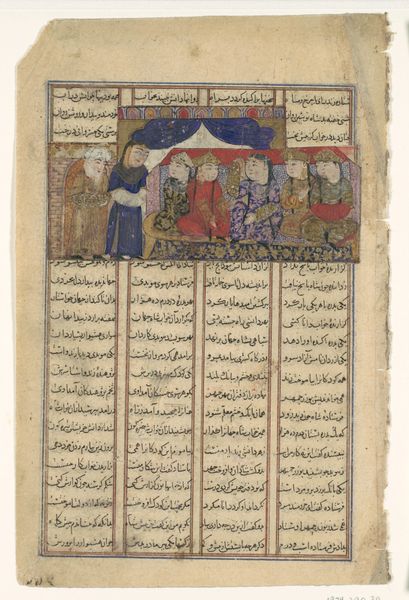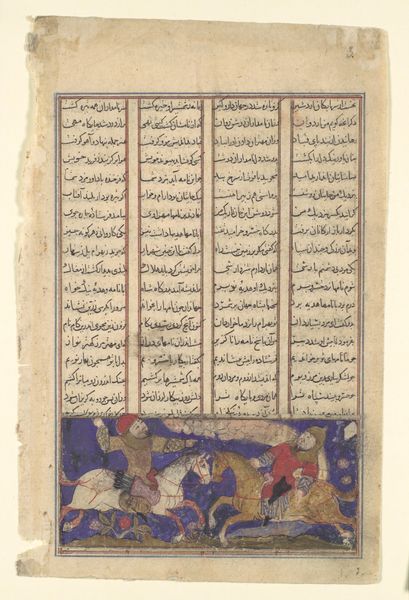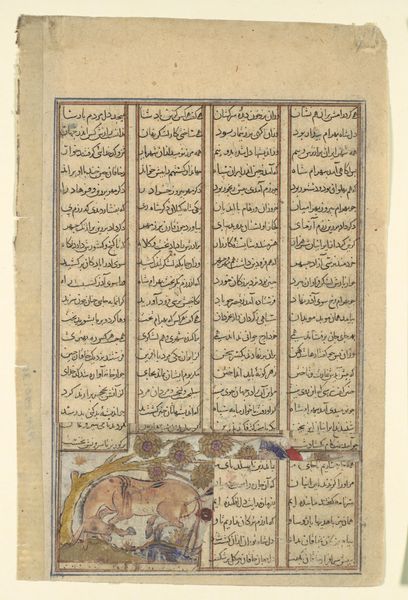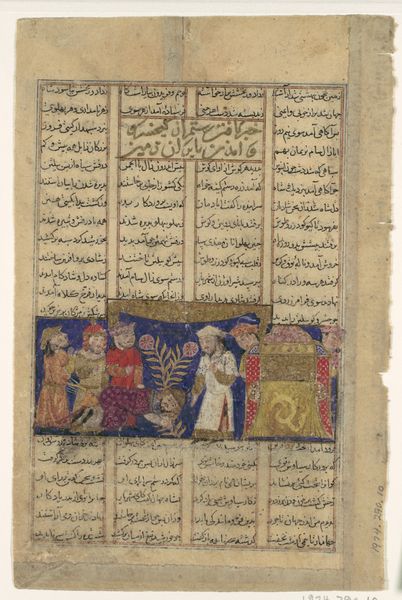
"Isfandiyar's Fifth Course: He Slays the Simurgh", Folio from a Shahnama (Book of Kings) 1305 - 1365
0:00
0:00
painting, paper, watercolor, ink
#
medieval
#
narrative-art
#
painting
#
landscape
#
figuration
#
paper
#
watercolor
#
ink
#
men
#
islamic-art
#
history-painting
#
miniature
Dimensions: Page: H. 7 13/16 in. (19.8 cm) W. 5 3/8 in. (13.6 cm) Painting: H. 1 7/8 (4.8 cm) W. 4 1/8 in. (10.4 cm)
Copyright: Public Domain
Curator: Let's take a closer look at "Isfandiyar's Fifth Course: He Slays the Simurgh," a vibrant folio from the Shahnama, dating back to between 1305 and 1365. It's ink, watercolor, and gold on paper. The moment's preserved at the Metropolitan Museum. Editor: Wow. Right away, I'm struck by the energy, and that vivid blue. It feels almost dreamlike. And the scale makes the conflict even more dramatic—this epic battle squeezed into such a delicate form. Curator: This is a particularly stunning example of Persian miniature painting, where the illustrative tradition met refined artistry. The image recounts a part of the epic story of Isfandiyar's journey, in which he confronts and ultimately slays the Simurgh. Editor: Beyond just the narrative, the visual language speaks volumes. That Simurgh, although fierce, almost seems caught in a dance with Isfandiyar’s chariot, and what of the complete disregard for what a Western viewer would see as realism. I see layers of symbolism about power, destiny, and the blurring of boundaries between the human and mythical worlds. Curator: Exactly, and notice how the landscape isn’t just a backdrop; it’s actively participating. That swirling, cloud-like pattern that creates depth with a fantastic use of space—very little is based on reality. Editor: Right, there is little effort to represent realistic depth. In thinking about power, one could also consider how the epic centres male heroism. The Simurgh does not win. Is there space in the tale to reflect on power structures or cultural values from our modern standpoint? Curator: Certainly. Seeing it through that lens also highlights the historical context—a time when such narratives played a central role in shaping identity and solidifying cultural narratives and what roles different genders have in their contribution to society. Editor: The complexities really do draw you in, don't they? This small, beautifully crafted painting opens a window onto so much, both artistically and culturally. Curator: Indeed, it reminds us how even seemingly straightforward tales can be potent carriers of meaning. A timeless reminder to delve deeper into every encounter we have.
Comments
No comments
Be the first to comment and join the conversation on the ultimate creative platform.
